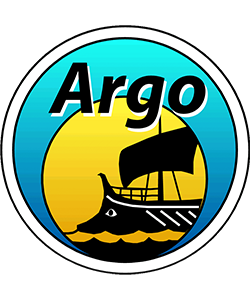What is Argo?
Argo is an international program that collects information from inside the ocean using a fleet of robotic instruments that drift with the ocean currents and move up and down between the surface and a mid-water level. Each instrument (float) spends almost all its life below the surface. The name Argo was chosen because the array of floats works in partnership with the Jason earth observing satellites that measure the shape of the ocean surface. (In Greek mythology, Jason sailed on his ship Argo in search of the golden fleece). Learn more about Argo
Learn how to access Argo data whether you're a scientist looking to use it in your resesarch, a student learning about the ocean or a curious member of the public.
Want to see Argo data without having to actually plot it yourself? Check out these different websites and viewers that show Argo data with a few clicks of a button.
One of Argo's key objectives is to observe ocean data related to climate change. Find out how it's doing on assessing ocean temperatures, the water cycle, and sea level rise.
Watch Argo floats being prepared for deployment in a lab and scientists launching floats. Take a peak inside floats and compare the different models.
The sensors on Argo floats and the floats themselves are what make the Argo Program possible. Learn about the latest developments with sensors and floats.
Find answers to questions like how Argo got its name, what powers floats and how long they live.
Argo celebrates 20 years of observing the ocean
What has Argo taught us, what makes it successful, and what does it hope to accomplish in the future?




